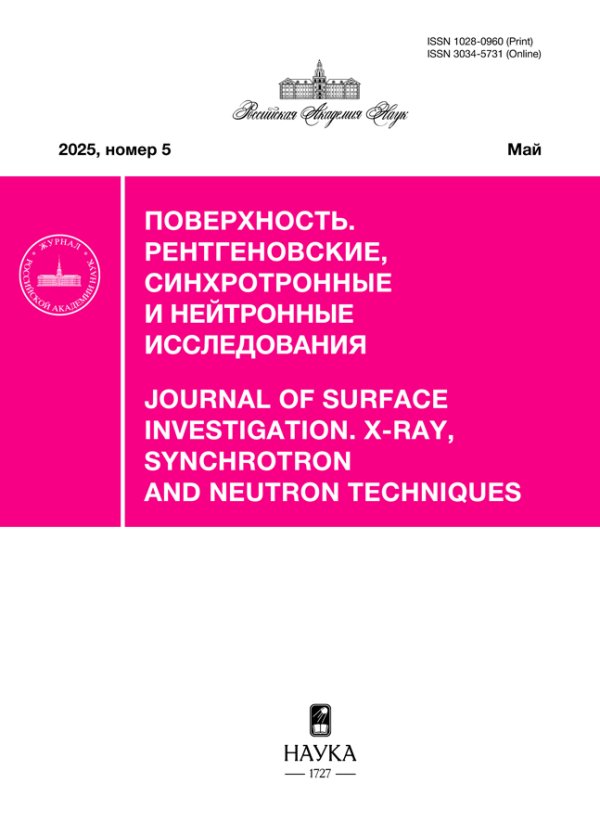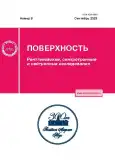Механизм твердорастворного упрочнения: квазилокализация дислокационных кинков
- Авторы: Петухов Б.В.1
-
Учреждения:
- Институт кристаллографии им. А.В. Шубникова ФНИЦ “Кристаллография и фотоника” РАН
- Выпуск: № 9 (2023)
- Страницы: 30-36
- Раздел: Статьи
- URL: https://journals.rcsi.science/1028-0960/article/view/137809
- DOI: https://doi.org/10.31857/S102809602309008X
- EDN: https://elibrary.ru/ZMOUUQ
- ID: 137809
Цитировать
Полный текст
Аннотация
Чувствительность механических свойств материалов к нарушениям трансляционной инвариантности кристаллической решетки создает возможность манипулировать этими свойствами в желаемом направлении посредством легирования или создания твердых растворов. В работе теоретически изучены механизмы такого манипулирования применительно к материалам, в которых подвижность дислокаций контролируется в основном потенциальным рельефом кристаллической решетки – так называемым рельефом Пайерлса. Вследствие концентрации легирующих атомов в дислокационных ядрах, играющих роль ловушек для этих атомов, динамические свойства дислокаций изменяются, что приводит и к модификации макроскопических механических свойств материала. Теория влияния легирования на кинковый механизм преодоления барьеров Пайерлса построена с учетом неупорядоченности содержания атомов раствора в дислокационных ядрах. При этом непосредственное описание кинетики характерных для кинков элементарных процессов заменено статистическим описанием. Рассмотрено разнонаправленное воздействие флуктуаций распределения атомов раствора, повышающих частоту образования пар кинков, но тормозящих распространение кинков вдоль дислокационных линий. Торможение кинков может приводить к аномальному характеру их подвижности, называемому квазилокализацией. Найдены условия преобладания ускоряющего или тормозящего фактора, соответствующих в макроскопическом плане упрочнению или разупрочнению материала.
Об авторах
Б. В. Петухов
Институт кристаллографии им. А.В. Шубникова ФНИЦ “Кристаллография и фотоника” РАН
Автор, ответственный за переписку.
Email: petukhov@ns.crys.ras.ru
Россия, 119333, Москва
Список литературы
- Pink E., Arsenault R.J. // Prog. Mater. Sci. 1979. V. 24. P. 1.
- Astie P., Peyrade J.P., Groh P. // Scr. Metall. 1982. V. 16. P. 977.
- Caillard D. // Acta Mater. 2013. V. 61. P. 2793.
- Chomel P., Cottu J.P. // Acta Mater. 1982. V. 30. P. 1481.
- Gupta C., Chakravarty // Phys. Stat. Sol. A. 2009. V. 206. P. 685. https://www.doi.org/10.1002/pssa.200824289
- Hu Y.-J. Fellinger M.R., Butler B.G., Paramore J.D., Ligda J.P., Chai Ren., Fang Z.Z., Middlemas S.C., Hemker K.J. // Int. J. Refr. Met. Hard Mater. 2018. V. 75. P. 248. https://www.doi.org/10.1016/j.ijrmhm.2018.04.021
- Okazaki K. // J. Mater. Sci. 1996. V. 31. P. 1087.
- Raffo P.I. // J. Less-Com. Met. 1968. V. 17. P. 133.
- Romaner L., Ambrosch-Draxl C. // Phys. Rev. Lett. 2010. V. 104. P. 195503. https://www.doi.org/10.1103/PhysRevLett.104.195503
- Zhao Y., Marian J. // Modelling Simul. Mater. Sci. Eng. 2018. V. 26. P. 045002. https://www.doi.org/10.1088/1361-65Xaaaecf
- Vaid A., Wei D., Bitzek E., Nasiri S., Zaiser M. // Acta Materialia. 2022 V. 236. P. 118095. https://doi.org/10.1016/j.actamat.2022.118095
- Samolyuk G.D., Osetsky Y.N., Stoller R.E. // J. Phys.: Condens. Matter. 2012. V. 25. № 2. P. 025403. https://doi.org/10.1088/0953-8984/25/2/025403
- Hachet G., Caillard D., Ventelon L., Clouet E. // Acta Mater. 2022 V. 222. № 1. P. 117440. https://doi.org/10.1016/j.actamat.2021.117440
- Barrera O., Bombac D., Chen Y., Daff T.D., Galindo-Nava E., Gong P., Haley D., Horton R., Katzarov I., Kermode J.R., Liverani C., Stopher M., Sweeney F. // J. Mater. Sci. 2018. V. 53. P. 6251. https://doi.org/10.1007/s10853-017-1978-5
- Петухов Б.В. // Известия РАН. Серия физическая. 2022. Т. 86. № 10. С. 1513. https://doi.org/10.31857/S0367676522100155
- Guyot P., Dorn J.E. // Can. J. Phys. 1967. V. 45. P. 983.
- Nadgorny E. // Prog, Mater. Sci. 1988. V. 31. P. 1.
- Seeger A. // Mater. Sci. Eng. A. 2004. V. 370. P. 50.
- Gong P., Katzarov I.H., Nutter J., Paxton A.T., Rainforth W.M. // Sci. Reps. 2020. V. 10. P. 10209. https://doi.org/10.1038/s41598-020-66965-z
- Messerschmidt U. Dislocation Dynamics During Plastic Deformation / Ed. Hull R. et al. Berlin, Heidelberg: Springer Series in Material Science, 2010. 503 p. https://doi.org/10.1007/978-3-642-03177-9
- Caillard D., Martin J.L. Thermally Activated Mechanisms in Crystal Plastisity. Amsterdam etc: Pergamon, 2003. 433 p.
- Петухов Б.В. Динамика дислокаций в кристаллическом рельефе. Дислокационные кинки и пластичность кристаллических материалов. Saarbrücken: Lambert Academic Publishing, 2016. 385 p.
- Koizumi H., Kirchner H.O.K., Suzuki T. // Philos. Mag. A. 1994. V. 69. P. 895.
- Ngan A.H.W. // Philos. Mag. A. 1999. V. 79:7. P. 1687. https://www.doi.org/10.1080/01418619908210387
- Mori H. // Mater. Trans. 2014. V. 55. № 10. P. 1531.
- Xиpт Дж., Лoтe И. Teopия диcлoкaций. M.: Aтoмиздaт, 1972. 598 c.
- Katzarov I.H., Drenchev L.B. // Crystals. 2022. № 12. P. 518. https://doi.org/10.3390/cryst12040518
- Петухов Б.В. //Физ. мет. и металловед. 1983. Т. 56. № 6. С. 1177.
- Wen M., Fukuyama S., Yokogawa K. // Acta Mater. 2003. V. 51. P. 1767.
- Wang Y., Wang X., Li Q., Xu B., & Liu W. // Journal of Materials Science. 2019. V. 54. № 15. P. 10728. https://doi.org/10.1007/s10853-019-03564-y
- Петухов Б.В. // Поверхность. Рентеген., синхротр. и нейтрон. исслед. 2022. Т. 16. № 1. С. 107. https://doi.org/10.31857/S1028096022010149
- Katzarov I.H., Drenchev L.B., Pashov D.L., Zarrouk T.N.A.T., Al-lahham O., Paxton A.T. // Phys. Rev. Mat. 2022. V. 6. P. 063603. https://doi.org/10.1103/PhyRevMaterials.6.063603
- Ландау Л.Д., Лифшиц Е.М. Статистическая физика. Москва: Физматлит, 2004. 496 с.
- Лифшиц И.М., Гредескул С.А., Пастур Л.А. Введение в теорию неупорядоченныз систем. М.: Наука, 1982. 360 с
- Петухов Б.В. // ЖЭТФ. 2010. Т. 137. № 1. С. 48.
- Maresca F., Curtin W.A. // Acta Mater. 2020. V. 162. P. 144 https://doi.org/10.1016/j.actamat.2019.10.007
- Suzuki H. / Dislocations in solids, V. 4. Ed. Nabarro F.R.N. North Holland, Amsterdam, 1980. P. 191.
- Antillon E., Woodward. C., Rao S.I., Akdim B. // Acta Mater. 2021. V. 215. P. 117012.
- Петухов Б.В. // ФТТ. 1988. Т. 30. № 10. С. 2893.
- Foss S., Korshunov D., Zachary S. An introduction to Heavy-Tailed and Subexponential Distributions / N.Y.: Springer New York, 2011. 123 p. https://doi.org/10.1007/978-1-4419-9473-8
- Iunin Yu.L., Nikitenko V.I., Orlov V.I., Petukhov B.V. // Phys. Rev. Lett. 1997. V. 78. № 16. P. 3137. https://doi.org/10.1103/PhysRevLett.78.3137
- Bouchaud J.-P., Georges A. // Phys. Rep. 1990. V. 195. P. 127. https://doi.org/10.1016/0370-1573(90)90099-N
- Учайкин В.В. // УФН. 2003. Т. 173. № 8. С. 847.
- Петухов Б.В. // ФТТ. 1993. Т. 35. № 5. С. 1121.
- Петухов Б.В. // ФТТ. 2022. Т. 64. № 12. С. 1972.
- Ghafarollahi A., Curtin W. // Acta Mater. 2021. V. 215. № 6. P. 117078. https;//doi.org/j.actamat.2921.117o78
- Caillard D. // Acta Mater. 2011. V. 59. P. 4974. https://doi.org/10.1016/j.actamat.2011.04.048
- Caillard D. // Acta Mater. 2016. V. 112. P. 273. https://doi.org/10.1016/j.actamat.2016.04.018
Дополнительные файлы














